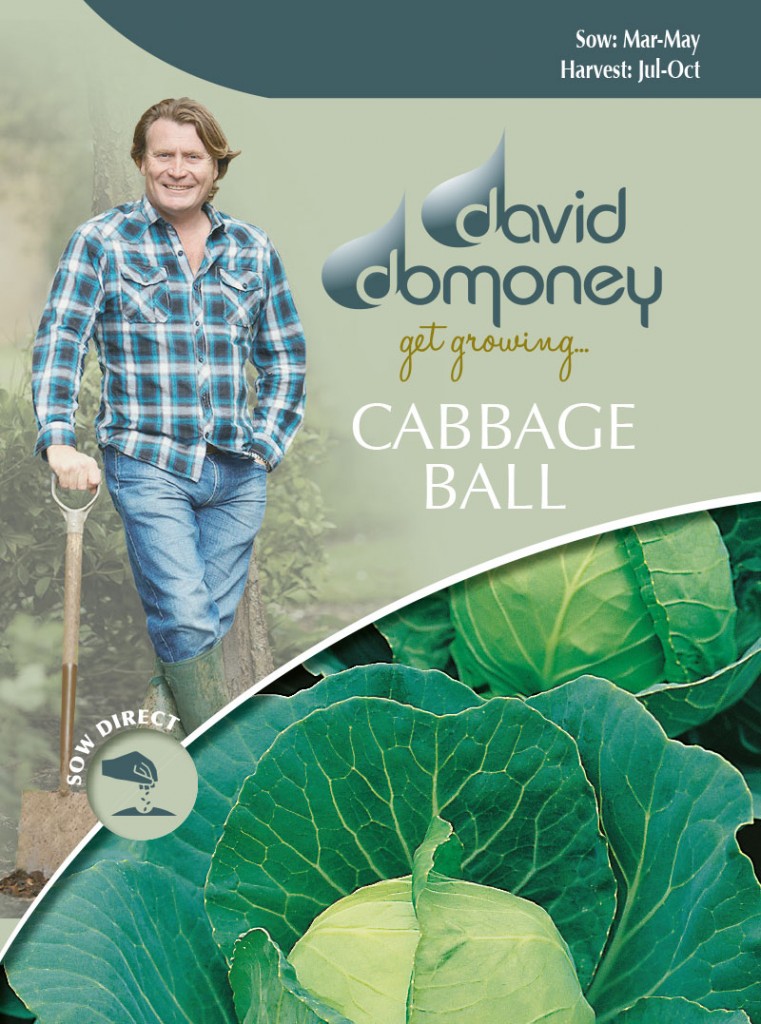Cabbage Ball
Cabbage Golden Acre/Primo (II)
A compact summer cabbage, also known as a ‘ballhead’ type. This popular variety is well known for its excellent flavour and tightly formed heads of crisp succulent leaves. Maturing quickly to form dense ball-shaped hearts while still relatively small, it is ideal for smaller gardens or where space is limited.
Growing Advice

Sow Indoors
Sow indoors March to May. Sow thinly 0.5cm deep into trays of compost. Water well and place in warm, light position, away from cold draughts and out of intense, direct sunlight. Keep the compost just moist and be careful not to overwater, the compost should almost dry out before it is watered again. Seedlings should start to appear in approximately 14-21 days. Carefully transplant the seedlings to individual pots when they are large enough to handle and keep moist. In late May or early June, acclimatise plants to outside conditions, avoiding any late frosts. Place plants outside in a sheltered spot during the day and bring them inside again at night when temperature fall. Do this for a week or two, until the plants have hardened off. Then transplant to a sunny growing position 40cm apart. Plant seedlings deep, right up to the first set of leaves and be sure to firm the young plants in well to prevent the plants from rocking in the wind, which can damage their delicate roots. Keep the soil moist and remove any weeds as they appear.
Sow Outdoors
Sow outdoors March to April. Cabbages can be sown directly outdoors for ease, although plants may take a bit longer to get going and therefore crop slightly later. If possible choose a sunny location for best results. All brassicas like good fertile soil so it’s worth digging in a slow release fertiliser or some organic matter before you start. Sow directly where plants are to grow 1.5cm deep, in shallow trenches 25cm apart. Cover the seeds with fine soil and water well. Keep the soil moist and remove any weeds as they appear. When young plants are 10cm tall transplant them to a final spacing of 40cm apart. Plant seedlings deep, right up to the first set of leaves and be sure to firm the young plants in well to prevent the plants from rocking in the wind, which can damage their delicate roots. Keep the soil moist and remove any weeds as they appear.
Top Tips About Seeds
Once the seed packet has been opened, the seeds can be stored in an airtight container until required for further sowings. cabbage seeds will maintain their vigour for a good number of years.
Growing in Containers
Cabbages are not recommended for patio pots but compact heads and ‘greens’ can be grown in raised beds or large troughs.
Common Problems
Young brassica plants are a real favourite with pigeons and later in the summer caterpillars can also become a problem. If you use a fine enough netting, held well above the plants, this will stop both the pigeons eating the young leaves and the cabbage white butterflies from reaching the plants to lay their eggs. To prevent disease, rotate brassica crops so they are not grown in the same location for at least a couple of years.
Harvest
Harvest from July to October. The heads can be cut and used at any stage, thought it is best to wait until they have really firmed up. It is good practice to clear away any remaining stumps when they are finished with, to prevent the growth of moulds, pests and diseases.
Ideas for using your cabbage ball
Early outdoor sowings will benefit from cloche protection. Drawing a little soil up around the stems of developing plants will help to prevent wind rock as the plants get larger. Check plants after windy weather and firm them in again if necessary. Give plants a really good soaking and a feed a week or so before harvesting begins and don’t let them dry out. Once the main head is cut, try scoring the stump with an X, this often results in one last flush of fresh ‘greens’.

